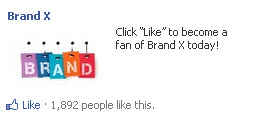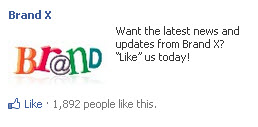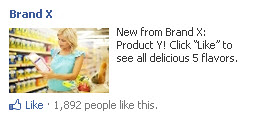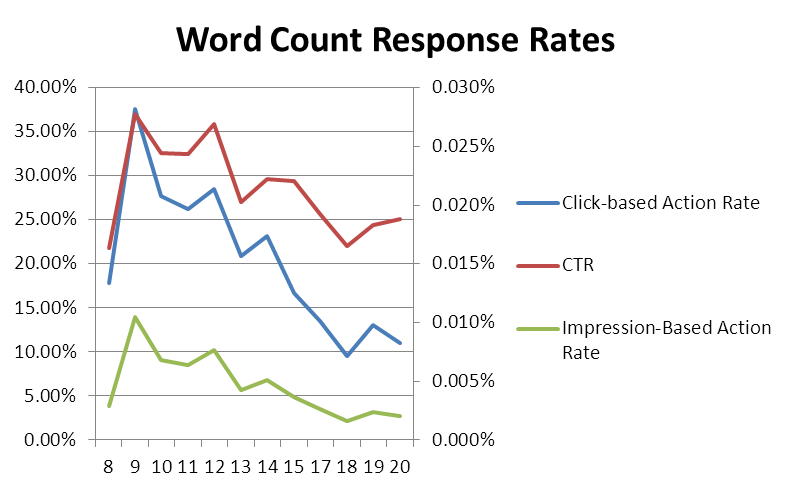Simple Tips For Writing Effective Facebook Ad Copy
It’s easy to dismiss creative as a lesser element of Facebook advertising. But it really does matter! In the many campaigns SocialCode has run, we’ve seen massive variance in performance across different text elements. Here is an opportunity to showcase what your brand or product is about, to distinguish yourselves from other ads or potential competitors, and […]
It’s easy to dismiss creative as a lesser element of Facebook advertising. But it really does matter!
In the many campaigns SocialCode has run, we’ve seen massive variance in performance across different text elements. Here is an opportunity to showcase what your brand or product is about, to distinguish yourselves from other ads or potential competitors, and to capture even more data.
Again, Facebook is a unique platform and as such requires unique creative. Not all ad types allow for creative input, but the most widely used Standard Click and Like Ads do offer creative control, and we’ll focus on those.
Keep The Objective In Mind
As always, keeping the goal of the campaign in mind is hugely important. Creative must be designed to solicit the exact desired response and must be tailored for every unique campaign. A general rule of thumb is to assume the average Facebook user is somewhat dense. The plainer you can be about exactly what you need him/her to do, the better.
It’s also important think about what kind of data you hope to gain from the campaign, and write creative that allows you to do that. A campaign around a new product, for example, should include multiple creatives that each focus on one of its major features, so you can determine exactly what aspects are driving the most interaction.
We also want to make sure we understand what it is we’re advertising, and that the copy is both relevant and brand-appropriate. Incorporating any existing messaging about the product or brand is a great way to tie your Facebook campaign into other marketing initiatives.
One effective way to cover all these bases is to create categories of copy and work outwards. Working with categories allows for more specific headlines and text, focuses efforts on the specific campaign goals, and also enables testing both across categories and different campaigns.
Here are some examples, for a campaign driving Likes to a well-known brand:
Direct
This is the most succinct and clear. It tells the user exactly what to do with a strong call to action. These tend to be extremely successful when targeting users who will recognize the brand being advertised.

Coupons and offers are obviously a great way to encourage people to like your page. Be clear about what the user is getting as benefit and deliver on what you are promising to avoid backlash.
Question
Asking users a question can be a good way to involve them in the campaign by reaching out to them directly and soliciting their responses.
Product
Ideally, we’d have a few from each category. Remember that for a fan campaign, the headline is locked as the name of the page; if we were writing copy for Standard Click ads, a headline would be required.
Headlines can be categorized in the same way as body copy, and are another way to show your stuff. Again, categories will be informed by the campaign’s objectives; not every category will be applicable to every campaign. Still, it’s important to have a variety so that you can evaluate exactly what is driving performance.
There’s also need for variety within those categories. Changing elements like length or word count, call to action, capitalization, and punctuation can actually make a huge difference, and also help to combat creative fatigue.
The graph below was created at the conclusion of a major fan campaign and demonstrates just how significant these changes can be.
As this graph illustrates, it seems as though campaigns with the goal of driving Page Likes benefit from shorter, more concise creative. On the other hand, conversion-focused campaigns tend to do better with longer text that spell out exactly what action needs to be taken.
You can also try using different calls-to-action; is it better to say “Click ‘Like’” or “’Like’ us”? Change up the word order to evaluate whether placement of the call-to-action affects conversion rates. Experiment with punctuation and capitalization, too. Will an exclamation point drive more interaction than a period?
And don’t forget to sweat the small stuff. When you’re working with such strict limits (90 characters for the body, 25 for the headline), every character counts. Check for misspellings, wasted space, and format correctly.
As I said before, you can use creative to differentiate yourself in the marketplace. Remember that it’s a representative of your brand or product — devote time to refining it.
Part of what makes successful Facebook advertisers is the ability to tailor their creative approach for every unique campaign, and the willingness to test a variety of different things.
Putting in the additional time to create Facebook-specific copy will make the campaign much more successful, and ultimately, effective Facebook creative can be used to inform future media buys on other channels.
Contributing authors are invited to create content for MarTech and are chosen for their expertise and contribution to the martech community. Our contributors work under the oversight of the editorial staff and contributions are checked for quality and relevance to our readers. The opinions they express are their own.
Related stories



